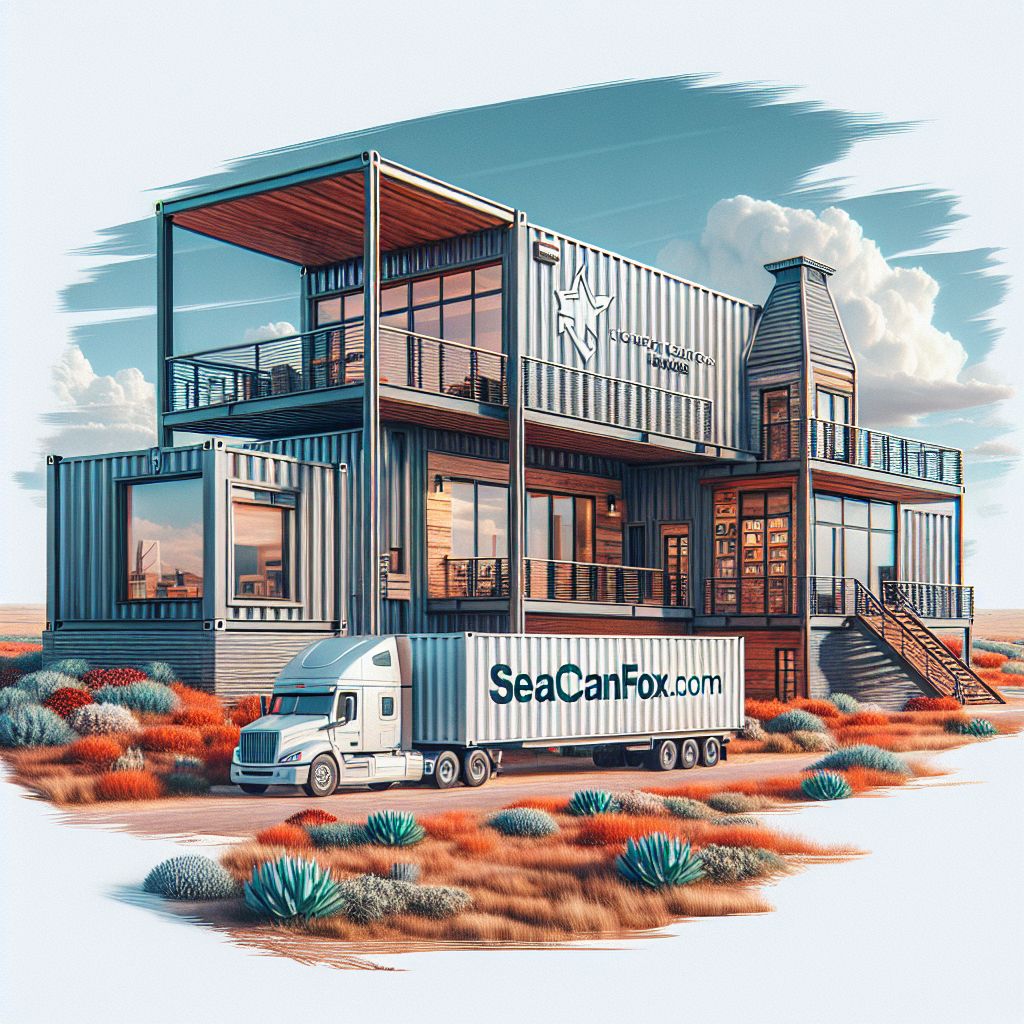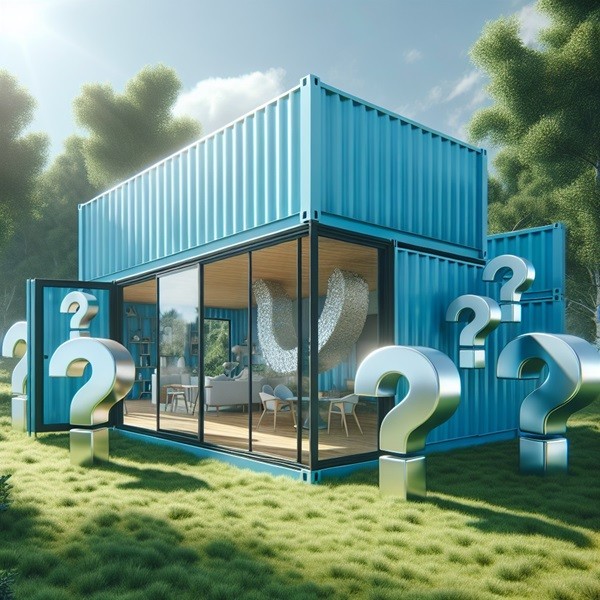
Key Takeaways
- Container homes in
offer safety and sustainability in extreme weather. - Key safety features of container homes include their robust structure and ability to withstand high winds.
- It’s essential to reinforce container homes with storm-proofing materials and a secure foundation.
- Proper
is crucial for comfort and protection against Kansas’ temperature extremes. - Navigating local regulations is necessary for a smooth container home construction process.
Kansas Shipping Container Homes: A Safe Harbor from the Storm
When it comes to building a home in Kansas, safety is a top priority, especially given the state’s reputation for extreme weather. The solution might just be found in the sturdy walls of shipping container homes. These structures are not only cost-effective and sustainable, but with the right design and modifications, they can offer a safe harbor from the storm.
My Favorite Container Homes Resource
I compared the top 3 Container Home Guides
to discover the ultimate resource!
See my top recommendation here
Why Choose Shipping Container Homes in Kansas?
First off, why consider a shipping container home in Kansas? Well, besides their trendy appeal, they’re incredibly durable. Made to transport goods across oceans, these containers can endure the harshest conditions. When converted into homes, they provide a solid shell that’s tough to beat by Kansas’ sometimes severe weather. And there’s more:
- They’re eco-friendly, reusing materials that might otherwise go to waste.
- They can be more affordable than traditional homes.
- With the right setup, they can be moved to different locations.
Safety Features Unique to Shipping Containers
Let’s talk safety. Shipping container homes have a few unique features that make them particularly resilient:
- Their corrugated steel structure can withstand high winds.
- Steel is non-combustible, providing some resistance to fire.
- When properly anchored, they can resist shifting during storms.
Most importantly, these features can be enhanced with thoughtful design and construction to make your Kansas container home even safer.
Reinforcing Your Container Home Against Kansas Weather
So, how do we reinforce a container home against Kansas’ notorious weather? It’s all about selecting the right materials and construction methods to strengthen your home’s natural defenses.
Storm-Proofing Materials and Modifications
For starters, let’s consider the modifications you’ll need:
- High-impact windows and doors to withstand debris thrown by high winds.
- Reinforced locking mechanisms to prevent forced entry during storms.
- Additional steel framing to support and maintain the integrity of the container.
Secure Foundation Options
A solid foundation is critical. You have a few options here:
- Pier foundations, which elevate your home, offering protection from flooding.
- Slab foundations, providing a stable and durable base for your container.
- Anchor systems that secure your home firmly to the ground.
Choosing the right foundation not only keeps your home in place during storms but also ensures longevity and stability.
Maximizing Safety with Add-Ons
Besides that, you can add extra layers of protection. Consider these add-ons:
- Storm shutters for windows and doors.
- Weather-resistant exterior paint or coatings.
- Roof reinforcements to bear the weight of heavy snow or debris.
Each of these steps further fortifies your container home against the elements, giving you peace of mind when the skies turn dark.
Avoiding Condensation and Mold
Condensation and mold can be a real issue in any home, and container homes are no exception. The metal walls can easily become cold, causing moisture from the air inside to condense on them. This can lead to mold growth, which is not only unsightly but can also pose health risks. To avoid this:
- Install proper insulation that serves as a barrier between the cold metal and the interior.
- Use dehumidifiers to maintain low humidity levels inside the home.
- Ensure good ventilation to allow air to circulate and prevent moisture buildup.
Properly addressing these issues will keep your container home safe, dry, and comfortable, no matter the weather outside.
Storm Resisting in Kansas
| Feature | Description | Cost (USD) |
|---|---|---|
| Foundation and Anchoring | Secure foundation or anchoring with pylons or earth penetrators to ensure stability during high winds. | Varies |
| Impact-Resistant Windows | Laminated safety glass windows that can withstand projectiles and impacts during storms. | $1,000 – $5,000 |
| Reinforcement and Insulation | Reinforcing cut areas for windows and doors, and insulating walls and roof to prevent damage. | $2,000 – $10,000 |
| Hurricane Straps | Straps installed to improve the stability of the home during storms. | $500 – $2,000 |
| Corten Steel Construction | Use of Corten Steel, a weather-resistant steel, for structural strength and durability. | Included in container cost |
References:
- Container Homes Can Withstand Hurricanes – WIDE HZ
- How Much Do Shipping Container Homes Cost? – Live Off Grid
- Can Shipping Container Homes Withstand a Hurricane? – iContainerHome
- Is Your Tiny House Container Safe From Hurricanes And Tornadoes? – TinyHouseMe
- Shipping Container House in Kansas City, KS – Costs – Homeyou

Navigating Kansas Regulations for Container Homes
Before diving into building your container home in Kansas, you need to navigate the local regulations. This means understanding the building codes and zoning laws specific to shipping container homes, which can vary by location. Compliance is key to ensuring your home is legally habitable and safe.
Building Codes and Zoning Laws Specific to Container Homes
- Research local zoning ordinances to determine if container homes are allowed in your desired area.
- Ensure your container home design meets all Kansas state building codes, which cover aspects like structural integrity, electrical systems, and fire safety.
- Consult with local authorities to understand any additional requirements or restrictions.
Remember, regulations are in place to keep you safe, so adhering to them is crucial for your container home project.
Permit Process Simplified
Securing the necessary permits can seem daunting, but it’s a straightforward process when you break it down. Here’s how to simplify it:
- Gather all required documentation, including your construction plans and proof of land ownership.
- Submit your plans for review to the local building department.
- Pay any associated fees and await approval before beginning construction.
Keep open communication with local authorities throughout the process to avoid any hiccups.
Emergency Preparedness and Container Homes
Emergency preparedness is essential, especially in areas prone to severe weather. Container homes offer a unique advantage due to their inherent strength, but additional steps can ensure your safety during an emergency.
Creating a Plan for Severe Weather Events
Having a well-thought-out plan can make all the difference when severe weather strikes. Your plan should include:
- Safe zones within your home that provide the best protection.
- A list of emergency supplies, like food, water, and first aid kits.
- Evacuation routes and nearby shelters, if you need to leave your home.
Review and practice your emergency plan regularly with all household members.
Integrating Technology for Advanced Warnings
Technology can be a lifesaver when it comes to advanced warnings for severe weather. Consider integrating:
- Weather apps that send alerts directly to your smartphone.
- Emergency weather radios that operate even when the power is out.
- Home automation systems that can secure your home with the touch of a button.
Stay informed and ready to act quickly should the need arise.
Choosing the Right Container for Your Home
Not all shipping containers are created equal, and choosing the right one is crucial for your home’s safety and longevity. Here’s what you need to consider:
New vs. Used Containers – Pros and Cons
| New Containers | Used Containers |
|---|---|
| More expensive but come without any wear and tear. | More affordable but may have dents, rust, or chemical residues. |
| No history, so you know exactly what you’re getting. | History of use, which means they may require more refurbishment. |
| Typically have a longer lifespan due to their new condition. | May have a shorter lifespan but are often still very durable. |
Consider your budget, the intended use, and the level of customization you want when making your choice.
Understanding Container Grades and Certifications
It’s also essential to understand container grades and certifications:
- A-grade containers are like new and are the best quality you can get.
- B-grade containers are used but in good condition, suitable for homes.
- C-grade containers are typically worn and may require significant repairs.
Always inspect the container in person, if possible, to ensure it meets your expectations and safety requirements.
Selecting Your Construction Team
Finding Experienced Builders in Kansas
Look for builders who have a proven track record with container homes. They should understand the unique challenges and opportunities these structures present. Ask for references and check their portfolio of completed projects.
Consulting with Safety Experts and Engineers
Consulting with safety experts and structural engineers is non-negotiable. They will ensure your home is up to code and can withstand Kansas weather. Their expertise will be invaluable in making your container home both safe and comfortable.
Designing for Durability and Comfort
Designing a container home isn’t just about safety; it’s also about creating a comfortable space to live in. This means considering the insulation, ventilation, and efficient use of space.
Customizing Layouts to Withstand Kansas Climates
Customize your layout to suit the Kansas climate. This might mean incorporating overhangs to provide shade in the summer and positioning windows to take advantage of the sun in the winter. The goal is to create a home that’s comfortable year-round.
Utilizing Space Efficiently in Your Container Home
Container homes can be compact, so it’s important to utilize space efficiently. This could involve built-in storage, multi-functional furniture, and thoughtful placement of windows and doors to open up the space and let in natural light.
Summing Up: Your Safe and Sustainable Haven
Your container home in Kansas can be a beacon of safety and sustainability. With the right planning, materials, and team, you can create a haven that stands strong against the elements and serves as a cozy retreat for you and your family.

Frequently Asked Questions
Let’s address some common questions about container homes in Kansas:
Are container homes tornado-proof?
No home can be guaranteed as tornado-proof, but container homes, when properly anchored and reinforced, can offer a higher level of resistance to high winds compared to traditional structures.
How long does it take to build a container home in Kansas?
The construction time can vary but typically, a container home can be built in a few months, which is quicker than traditional home construction.
What is the lifespan of a container home?
With proper maintenance, a container home can last 25 years or more, similar to or even exceeding the lifespan of some traditional homes.
Can I build a container home anywhere in Kansas?
You’ll need to check local zoning laws and building codes, as they can vary. Some areas may have restrictions on container homes.
How do shipping container homes hold up in extreme heat and cold?
When properly insulated and ventilated, container homes can maintain a comfortable interior temperature in both extreme heat and cold.
In conclusion, Kansas shipping container homes present an opportunity for safe, sustainable, and efficient living. By understanding the considerations and taking the right steps, you can create a durable home that provides security and comfort in Kansas’ dynamic climate.





